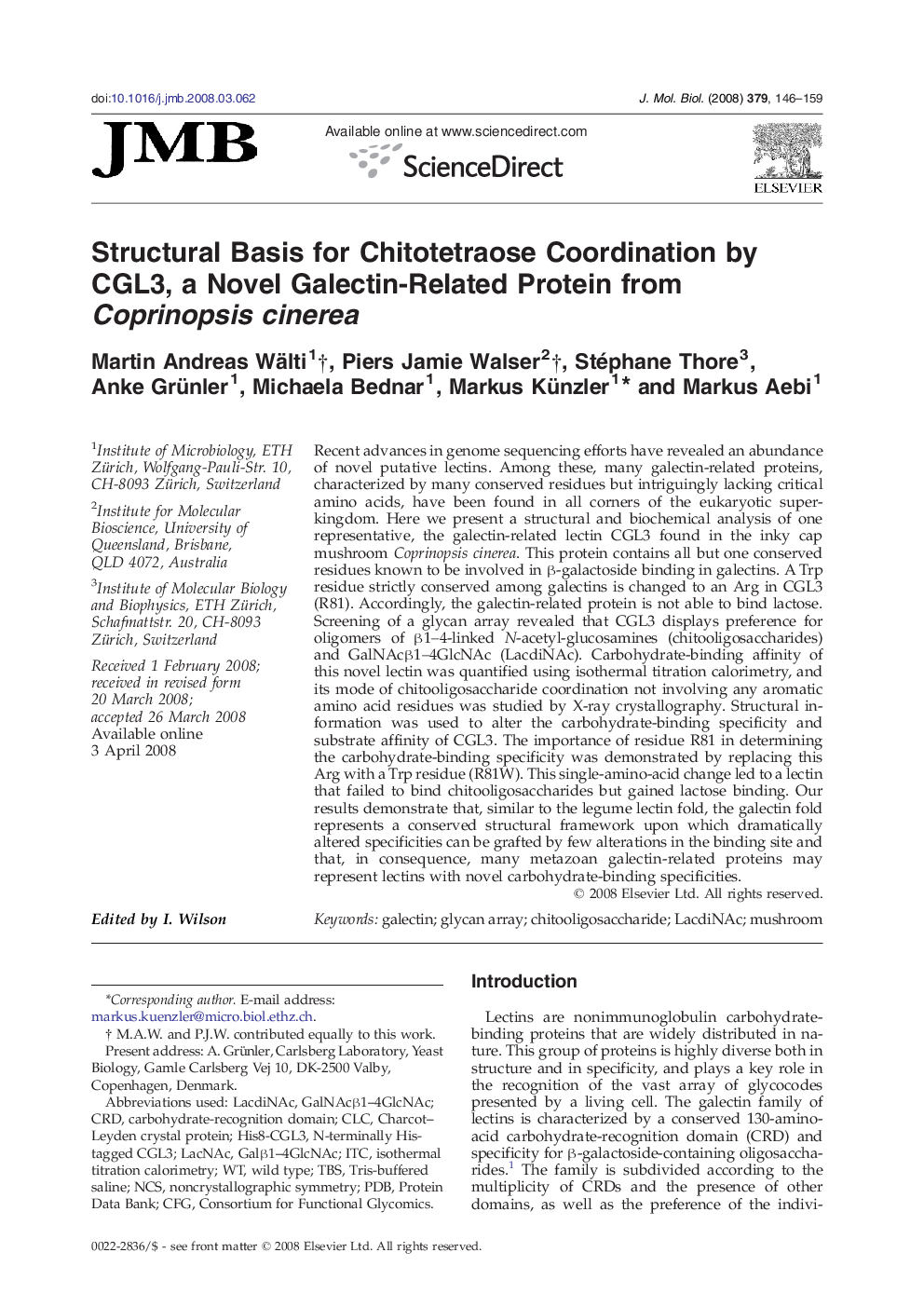| Article ID | Journal | Published Year | Pages | File Type |
|---|---|---|---|---|
| 2187464 | Journal of Molecular Biology | 2008 | 14 Pages |
Recent advances in genome sequencing efforts have revealed an abundance of novel putative lectins. Among these, many galectin-related proteins, characterized by many conserved residues but intriguingly lacking critical amino acids, have been found in all corners of the eukaryotic superkingdom. Here we present a structural and biochemical analysis of one representative, the galectin-related lectin CGL3 found in the inky cap mushroom Coprinopsis cinerea. This protein contains all but one conserved residues known to be involved in β-galactoside binding in galectins. A Trp residue strictly conserved among galectins is changed to an Arg in CGL3 (R81). Accordingly, the galectin-related protein is not able to bind lactose. Screening of a glycan array revealed that CGL3 displays preference for oligomers of β1–4-linked N-acetyl-glucosamines (chitooligosaccharides) and GalNAcβ1–4GlcNAc (LacdiNAc). Carbohydrate-binding affinity of this novel lectin was quantified using isothermal titration calorimetry, and its mode of chitooligosaccharide coordination not involving any aromatic amino acid residues was studied by X-ray crystallography. Structural information was used to alter the carbohydrate-binding specificity and substrate affinity of CGL3. The importance of residue R81 in determining the carbohydrate-binding specificity was demonstrated by replacing this Arg with a Trp residue (R81W). This single-amino-acid change led to a lectin that failed to bind chitooligosaccharides but gained lactose binding. Our results demonstrate that, similar to the legume lectin fold, the galectin fold represents a conserved structural framework upon which dramatically altered specificities can be grafted by few alterations in the binding site and that, in consequence, many metazoan galectin-related proteins may represent lectins with novel carbohydrate-binding specificities.
